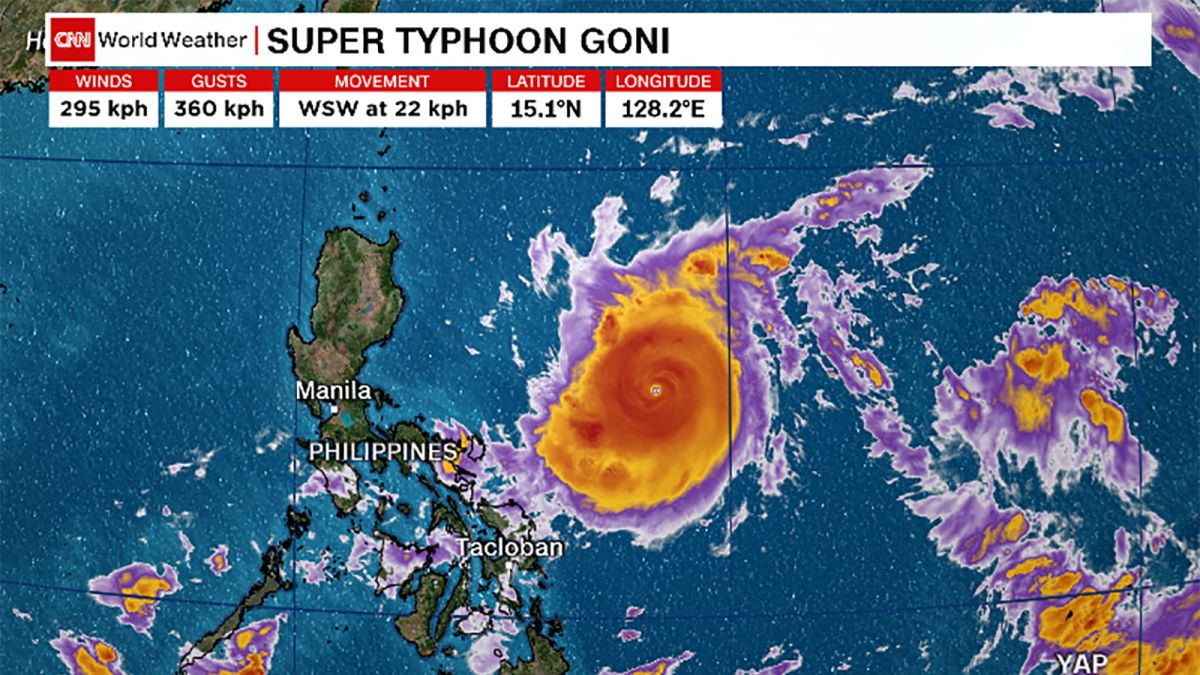MANILA: Typhoon Goni made landfall with intense winds in the Philippines on early Sunday morning, but spares the capital Manilla by the end of the day.
Only grazing Manilla, the storm’s intensity killed around 10 people in the Bicol region of Luzon, according to the regional Office of Civil Defense. The deaths were caused by an overflowing river and falling tree branches.
Nov. 1, late Sunday, Goni, that was once recorded as the most powerful storms, degraded to a tropical storm according to the national weather agency.
Though the electricity was out in some areas of Manilla, no notable destruction was reported. Meanwhile, in Bicol, around 400,000 people were displaced, with almost 350,000 sheltering in evacuation centers with the power out, said the civil defense office.
Francisco Domagoso, the mayor of Manilla said they have been on high alert since Friday. He added that strict protocols have been enforced to avoid the spread of COVID-19. Currently, the officials are taking care of debris on roads and fallen electricity wires, also providing food and provisions.

Goni, the “super-typhoon”, sustained winds over 190 miles per hour, the highest ever recorded. Even though it weakened throughout the day, it still packed winds of 135 miles per hour as it passes across Bicol, deemed the most powerful storms to strike the Philippines.
By Sunday evening, at least 10 people were killed, and all had been in the Albay Province, about 200 miles southeast of Manilla, said Office of Civil Defense in the Bicol region.
Comparing to last week, where 22 people were killed by Typhoon Molave crossing the region Goni had passed through.
The Philippines will have to embrace their 19th tropical storm, Atsani, that develops behind Goni. Though, the national weather agency claimed that it has yet to accumulate as much strength. It is expected to strengthen into a typhoon by Wednesday (Oct. 4) and hit the northernmost part of the Philippines.
Around 1 million people have evacuated from their homes on Saturday (Oct. 31).
Mark Timbal, a spokesman for the National Disaster Risk Reduction and Management Council states that the chances of widespread flooding and landslides are increasing due to the strong winds. Storm surges are imminent on the east coast, so they would be monitoring Mayon and Taal volcanoes for possible eruptions and mudflows, he added.
Preventive measures, including the evacuations, have started in coastal and landslide-prone areas in the provinces of Camarines Norte and Camarines Sur. Albay provincial government would order residents in danger-rid areas to leave their homes, told Gremil Naz, a local disaster official said in the DZBB radio station.
Fortunately, the likelihood of this typhoon being the strongest typhoon that will hit the Philippines since the Haiyan, which has killed more than 6,300 people in the year 2013, was just another assumption.
Source: The Watchers, CNA, New York Times









Leave a Comment